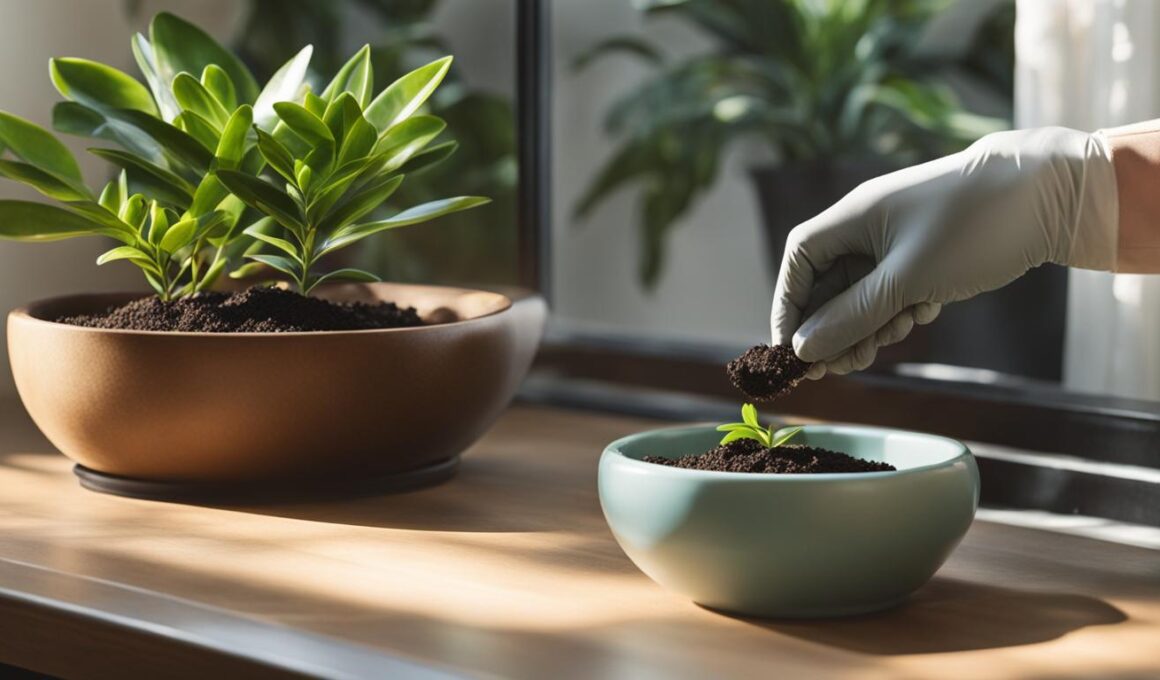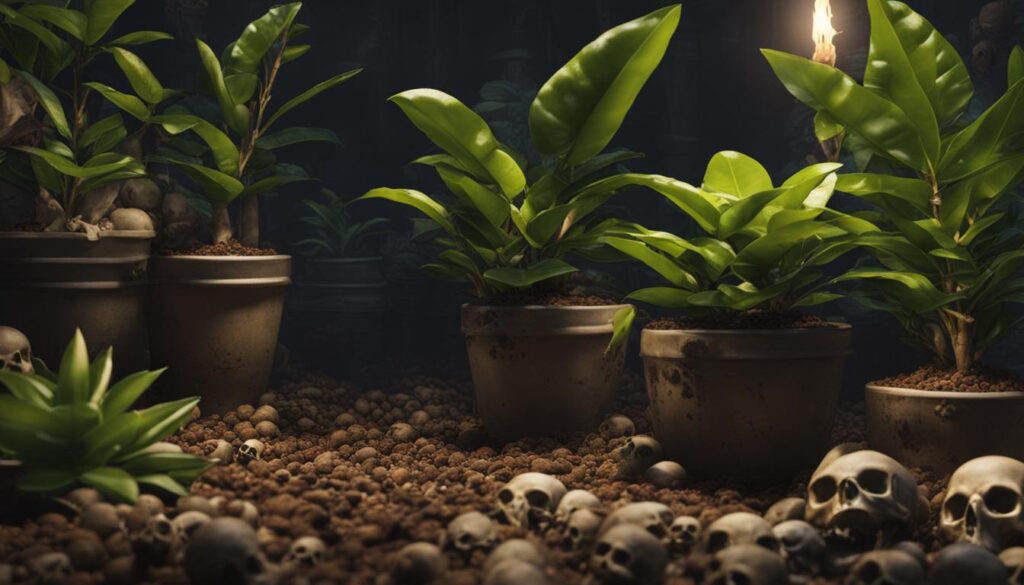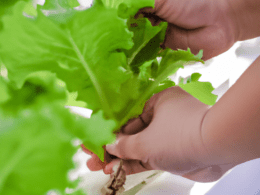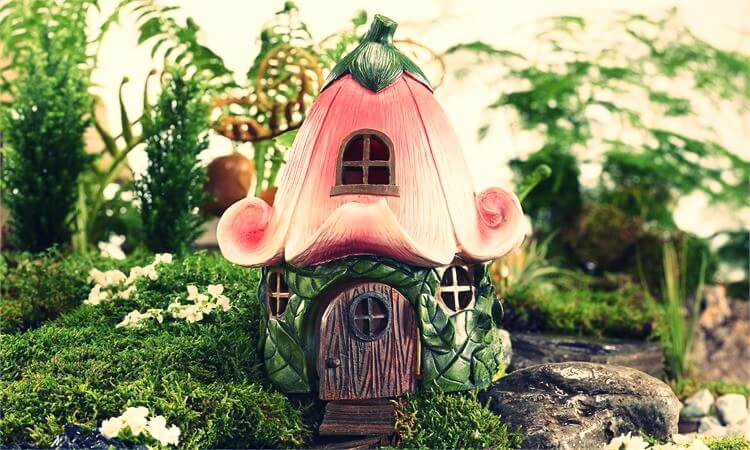Understanding the proper ZZ plant fertilization schedule is crucial for maintaining the health and vigor of your Zamioculcas Zamiifolia. While the ZZ plant is known for its adaptability and low-maintenance nature, providing the correct feeding frequency for ZZ plant can make a significant difference in its appearance, growth rate, and overall well-being. In this guide, we will explore the factors influencing the optimal fertilizer timing for ZZ plants, along with the types of fertilizers suitable for these popular indoor plants.
Key Takeaways
- ZZ plants are resilient and adaptable, requiring fertilization every six months for basic care.
- More frequent feeding can encourage larger and faster growth in ZZ plants, especially when the plant shows signs of nutrient deficiency.
- A balanced 20-20-20 fertilizer is ideal for providing essential nutrients to ZZ plants.
- Fertilization should be adjusted based on the specific needs of your ZZ plant and the environment it is in.
- Proper fertilization practices, including seasonal adjustments and avoiding over-fertilization, are crucial for ensuring a healthy ZZ plant.
Understanding the ZZ Plant and Its Growth Habits
Introduced to the houseplant market in the 1990s, the ZZ plant, or Zamioculcas zamiifolia, is native to Eastern Africa. Known for its shiny, waxy dark green leaves, this popular plant is not only visually appealing, but also resilient and adaptable to various living environments.
ZZ Plant Scientific Overview
Belonging to the family Araceae, the ZZ plant’s unique leaf structure sets it apart from other common houseplants. The compound leaves are composed of several leaflets, each growing symmetrically from a central stem. This well-organized growth pattern contributes to its pleasing visual effect and makes ZZ plant identification effortless.
Adaptability and Resilience of the ZZ Plant
One of the critical ZZ plant characteristics that has made it a popular choice among indoor gardeners is its adaptability. These plants are able to tolerate low light conditions, flourish under fluorescent lighting, and survive with watering every couple of weeks. Their ability to withstand low humidity levels makes them a standout among drought-resistant houseplants, perfect for any busy or forgetful plant owner.
Signs Your ZZ Plant Needs Fertilizer
When it comes to ZZ plant care, it’s essential to recognize the indicators that your plant may need extra nutrients. A telling sign that fertilization is required is the dropping of leaflets due to severe drought, which is a survival technique of the ZZ plant. By providing essential nutrients through fertilization, you can support its resilience and adaptability, ensuring it continues to thrive in your home.
| ZZ Plant Care Indicators | Recognizing Nutrient Needs | Fertilizer Requirement Signs |
|---|---|---|
| Shiny, waxy leaves | Leaf color | Leaf dropping |
| Low water needs | Leaflet texture | Stunted growth |
| Adapts to various light conditions | Leaflet size | Weak stems |
In conclusion, the ZZ plant’s overall hardiness and adaptability make it the perfect houseplant for any space. Becoming familiar with its specific growth habits and recognizing its nutrient needs will ensure your ZZ plant thrives, so be sure to monitor it closely and adjust your ZZ plant care routine accordingly.
The Role of Fertilization in ZZ Plant Care
Fertilization plays a crucial role in the overall health and growth of ZZ plants. Providing these easygoing indoor plants with the right nutrients contributes not only to their overall well-being but also to their vigor and resilience. The importance of fertilizing ZZ plants cannot be overstated, as it ensures they receive the necessary nutrients to promote and sustain healthy growth.
- Enhanced Growth: A well-fed ZZ plant will be better equipped to reach its full potential. Fertilization assists in ZZ plant growth enhancement by providing the optimal nutrition needed for fuller and healthier foliage.
- Nutrient Support: Indoor plants, like their outdoor counterparts, require consistent access to nutrients. Fertilization offers essential nutrient support for ZZ plants, making them stronger and more able to resist pests and diseases.
- Signs of Nutrient Deficiency: Fertilizing the ZZ plant is particularly important when the plant shows signs of nutrient deficiency. In such cases, their leaves may turn pale or yellowish, and growth can become stunted. Proper fertilization helps to rectify these issues and allows the plant to regain a state of optimal health.
It’s essential to find a balance between adequate fertilization and over-fertilization. Over-fertilizing can lead to nutrient toxicity, cause leaf burn, and ultimately harm the ZZ plant. To avoid such pitfalls and promote the best possible growth and health, follow the recommended fertilization schedule and monitor the plant for any signs of nutrient deficiency or toxicity.
Navigating the Fertilizing Frequency for ZZ Plants
Understanding the ideal ZZ plant fertilization frequency is crucial to promoting a thriving indoor plant. Factors that affect fertilization needs include light exposure, growing environment, and the plant’s overall condition. It is essential to tailor your customizing fertilizer regimen according to these conditions.
Assessing Your Plant’s Specific Needs
ZZ plants can tolerate a range of growing conditions, from bright, indirect sunlight to low-light environments, but their ZZ plant feeding requirements vary accordingly. For healthy growth, pay attention to the following factors when determining the appropriate fertilization frequency:
- Bright, indirect light: Plants in well-lit areas may require more frequent feeding to fully benefit from the available light.
- Low-light conditions: ZZ plants in low-light environments may need fertilization less frequently, as their growth rate may be slower.
- Temperature and humidity: Warmer, more humid environments may encourage faster growth, necessitating more frequent fertilization; conversely, cooler or drier conditions might reduce the need for fertilization.
As a general rule, ZZ plants in bright, indirect light will benefit from fertilization every three to four months, while those in lower light conditions may only require fertilization twice a year.
Regularly assessing the specific needs of your ZZ plant will help you determine the optimal ZZ plant fertilization frequency. By customizing your fertilizer regimen and recognizing the varying ZZ plant feeding requirements based on growing conditions, you can ensure that your ZZ plant remains healthy and vigorous.
Choosing the Right Fertilizer for Your ZZ Plant
Selecting the proper fertilizer for your ZZ plant is essential in promoting healthy growth and ensuring a vibrant appearance. With a variety of ZZ plant fertilizer types available, it’s necessary to understand the different formulations for ZZ plant nutrition to provide the optimal nourishment for your plant.
Understanding Fertilizer Formulations
A well-balanced 20-20-20 fertilizer formulation is ideal for ZZ plants, offering equal proportions of nitrogen, phosphate, and soluble potash. This blend helps to:
- Stimulate growth
- Promote lush foliage
- Support strong root development
These nutrients maintain overall plant health and can boost your ZZ plant’s growth when applied once or twice a year. Although liquid or granular formulations are suitable for ZZ plants, liquid fertilizers are often preferable for more precise application and easier absorption.
When selecting a fertilizer, it’s essential to consider both its macronutrient and micronutrient compositions. Macronutrients include:
- Nitrogen (N): Vital for leaf growth and overall plant vigor
- Phosphorus (P): Supports root development and overall plant maturation
- Potassium (K): Assists in maintaining overall plant health, disease resistance, and water regulation
In addition to the essential macronutrients, micronutrients play a crucial role in your ZZ plant’s overall health. Common micronutrients include:
- Calcium
- Magnesium
- Sulfur
- Boron
- Iron
- Zinc
- Molybdenum
These micronutrients contribute to various growth and development processes within the ZZ plant and help to maintain its overall health. A well-balanced fertilizer will contain these essential nutrients in appropriate proportions.
In conclusion, choosing the ideal fertilizer for your ZZ plant is crucial for ensuring proper growth and maintaining a thriving indoor plant. Opt for a 20-20-20 balanced fertilizer formulation that includes essential macronutrients and micronutrients to support your ZZ plant’s overall health and vitality.
Best Practices for Fertilizing Your ZZ Plant
Knowing how to fertilize your ZZ plant is crucial for maintaining its health and promoting growth. Follow these ZZ plant fertilizing tips and effective feeding techniques to ensure the best care for your plant:
- Use a balanced fertilizer during the growing season: Applying a balanced fertilizer, like a 20-20-20 formulation, ensures that your ZZ plant receives the essential nutrients it needs in appropriate quantities. Fertilize during the growing season for optimal results.
- Do not over-fertilize: Over-fertilization can lead to nutrient burn and potential damage to your ZZ plant. Stick to the recommended fertilization frequency and dosage, and monitor your plant for any signs of stress.
- Correlate watering with the plant’s growth phase: As your ZZ plant enters different growth phases, its water requirements may change. Adjust your watering schedule accordingly to prevent over- or under-watering and maintain healthy soil moisture levels.
Watering and Fertilizing Synergy
Maintaining a balance between watering and fertilizing is vital to your ZZ plant’s health. Overwatering may lead to root rot and nutrient leaching, while underwatering can result in a nutrient deficiency. Use the following table to guide your ZZ plant care in correlation with its growth phase:
| Growth Phase | Watering Frequency | Fertilizing Frequency |
|---|---|---|
| Active Growth | Every 1-2 weeks | Every 4-6 weeks with a balanced fertilizer |
| Dormant or Slow Growth | Every 2-4 weeks | Every 6 months or as needed |
Adhering to these best practices for fertilizing your ZZ plant will ensure it receives the necessary nutrients for healthy growth while avoiding potential problems caused by over- or under-fertilization. Always monitor your plant’s condition and adjust your care routine according to its specific needs and environmental factors.
Common Mistakes to Avoid When Fertilizing
Fertilizing your ZZ plant is an essential part of maintaining its health and vitality. However, there are several common mistakes that can be made during the fertilization process, leading to adverse outcomes. By being aware of these errors and taking proper precautions, you can ensure optimal ZZ plant nutrition management and promote a thriving plant.
Over-fertilization is one of the most prevalent ZZ plant fertilizing mistakes. When too much fertilizer is applied, it can lead to “nutrient burn” or root burn, characterized by yellowing or browning leaf tips and edges, stunted growth, and even the death of the plant. To avoid over-fertilization, follow the manufacturer’s recommended application rates, and monitor your plant for signs of nutrient burn.
Another common error is watering too frequently after fertilizing, which can result in root rot due to overly moist soil conditions. ZZ plants are drought-resistant and usually only need to be watered every two weeks. However, after fertilizing, it is essential to adjust your watering schedule to prevent root rot and ensure proper nutrient uptake.
Several measures can help you avoid these common mistakes:
- Ensure proper drainage: The use of well-draining soil and a pot with drainage holes is vital for avoiding overwatering issues.
- Maintain a balanced nutrient regimen: Nutrients should be applied in the correct proportions and not in excess. A balanced 20-20-20 fertilizer formulation is ideal for ZZ plants.
- Adhere to appropriate watering schedules: Adjust your watering routines according to your plant’s specific conditions and requirements, taking extra care after fertilization to prevent overwatering.
ZZ plant fertilization should be approached with care, ensuring proper nutrition management while avoiding over-fertilization and excess watering. By adhering to the suggested practices and steering clear of common pitfalls, you can preserve the health of your ZZ plant and enjoy its lush, vibrant growth.
Seasonal Considerations for Fertilizing ZZ Plants
It’s crucial to adjust ZZ plant care by season, especially when it comes to fertilization. Seasonal fertilizer application for ZZ plants varies depending on the plant’s growth rate throughout the year. This is mainly due to the fact that ZZ plants enter a dormancy period during the colder months.:
During the growing season (spring and summer), a ZZ plant’s metabolic rate increases, allowing for faster growth. This requires more nutrients and, therefore, may justify more frequent fertilization.
On the other hand, during the fall and winter, the ZZ plant’s growth rate slows down due to its dormancy period. During this time, it’s important to reduce or even stop fertilization altogether to prevent over-feeding and possible harm to your plant.
ZZ Plant Fertilization Guide by Season
| Season | Fertilization Frequency | Notes |
|---|---|---|
| Spring | Once every 2-3 months | Begin fertilizing as the growing season starts to support the plant’s increased metabolic rate. |
| Summer | Once every 2-3 months | Continue fertilization during the peak growing season to maintain optimal nutrient levels. |
| Fall | Once at the beginning of the season | Reduce fertilization as the ZZ plant’s growth rate slows and it enters dormancy. |
| Winter | No fertilization | Completely halt fertilization during dormancy to prevent over-feeding. |
By adjusting ZZ plant care by season and taking the plant’s dormancy period into consideration, you can ensure that your ZZ plant receives the right amount of nutrients throughout the year. This will ultimately lead to a healthier and happier plant that will thrive under your care.
Is Over-Fertilization Causing My ZZ Plant Leaves to Turn Brown?
Over-fertilization may be the reason for your zz plant leaves turning brown. Excess fertilizer can cause salt buildup in the soil, leading to leaf discoloration. Make sure to follow the recommended feeding schedule and flush the soil periodically to avoid nutrient imbalances that can harm your plant.
Conclusion
In summary, following a proper ZZ plant fertilization guide is essential for maintaining the health and vibrancy of your indoor Zamioculcas zamiifolia. Optimal fertilizer timing for this drought-tolerant, easy-to-grow houseplant typically involves a feeding frequency of once or twice a year. However, assessing your plant’s specific needs and adjusting its care according to the environment and seasonal changes is crucial in optimizing your ZZ plant’s growth.
By selecting the appropriate balanced fertilizer formulation, you can provide your ZZ plant with the necessary nutrients it needs for steady growth and overall health. Following best practices when fertilizing your ZZ plant, such as not overfeeding your plant and ensuring proper drainage, is essential to avoid common pitfalls like nutrient burn and root rot.
With proper attention to your ZZ plant’s unique requirements and the implementation of an indoor plant care summary that includes adjusting fertilization based on seasons, you can ensure your beloved Zamioculcas zamiifolia continues to thrive and brighten your indoor space for years to come.












